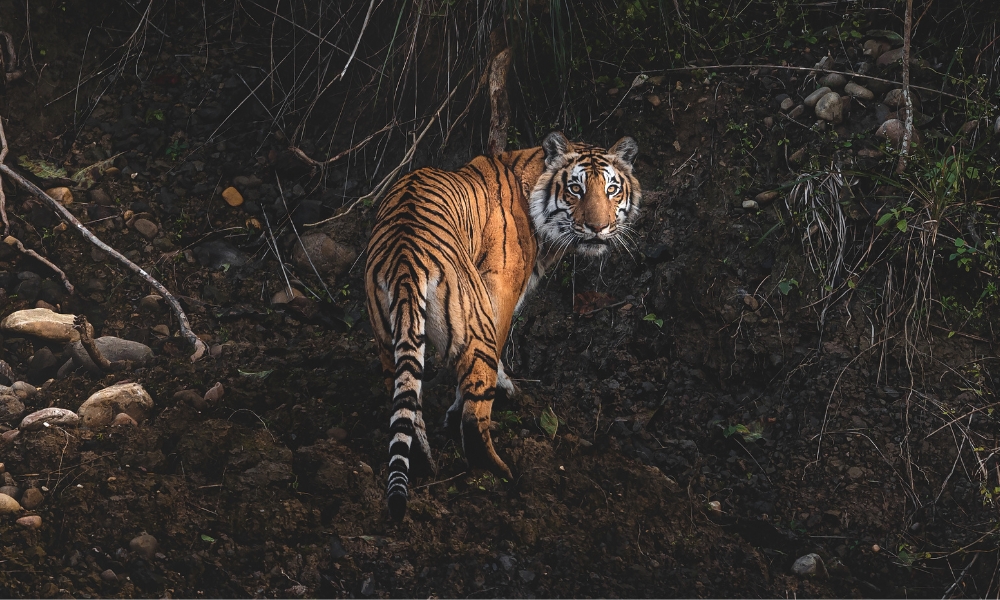Jim Corbett National Park Ranks High on the Global Stage
 The Jim Corbett National Park in India is a paradise for nature lovers, having earned its well-deserved place as number two on the inaugural National Parks 2021 list. Established in 1936 as the nation’s first national park, it continues to impress with its stunning landscapes, diverse flora and fauna, and commitment to wildlife conservation. This article dives into what makes this popular destination so special for wildlife enthusiasts all over the world, and why it continues to captivate visitors with its unparalleled beauty.
The Jim Corbett National Park in India is a paradise for nature lovers, having earned its well-deserved place as number two on the inaugural National Parks 2021 list. Established in 1936 as the nation’s first national park, it continues to impress with its stunning landscapes, diverse flora and fauna, and commitment to wildlife conservation. This article dives into what makes this popular destination so special for wildlife enthusiasts all over the world, and why it continues to captivate visitors with its unparalleled beauty.
Nestled in the foothills of the majestic Himalayas in the state of Uttarakhand, the Jim Corbett National Park was established with the primary objective of protecting the endangered Bengal tiger. It was named after the renowned British hunter and conservationist, Edward James “Jim” Corbett, who played a crucial role in advocating for the protection of tigers and other wildlife in the region.
Spanning over 520 square kilometers, the park encompasses a diverse range of ecosystems, from dense Sal forests and grasslands to riverine belts and hilly terrains. This varied landscape creates a perfect habitat for a wide array of flora and fauna, making it a hotspot for nature enthusiasts and researchers alike.
Jim Corbett National Park is renowned for its varied wildlife, from the Bengal tiger to leopards, elephants, and a variety of deer species, like spotted deer, sambar, and barking deer, as well as wild boars and langurs. Birdwatchers will be delighted by the diversity of avian inhabitants. Not to mention the endangered gharial and Mugger crocodile that can be found at Ramganga River running through the park.
The park has seen great strides in the conservation of tigers, thanks to the hard work of park staff, local residents, and wildlife fans. They have been able to increase tiger numbers and safeguard their habitats through inventive conservation strategies, such as community ecotourism and anti-poaching initiatives. This has enabled a harmonious relationship between conservation efforts and responsible tourism.
Jim Corbett National Park embraces a sustainable approach to ecotourism, ensuring that visitors can experience the wonders of wildlife without causing harm to the delicate ecosystem. The park offers a range of activities, including safaris, nature walks, and birdwatching excursions, all conducted under the guidance of trained naturalists and forest officials.
The park authorities have placed strict guidelines to ensure responsible wildlife encounters, ensuring that visitors maintain a safe distance from the animals and do not disturb their natural behavior. This approach not only safeguards the wildlife but also enhances the overall experience for visitors, providing an authentic glimpse into the lives of these magnificent creatures in their natural habitat.
Jim Corbett National Park faces several challenges to its delicate ecosystem despite its remarkable success. It is imperative to continue to pay attention to habitat loss, human-wildlife conflicts, and poaching of endangered species as they are ongoing concerns. The park authorities are actively involved in research and conservation initiatives to address these issues and ensure the long-term sustainability of the park’s ecosystem.
Community-based conservation efforts will be expanded by the park moving forward, involving local communities in wildlife protection and promoting sustainable livelihoods. Additionally, measures to reduce human-wildlife conflicts are on the agenda, further cementing the park’s commitment to wildlife conservation and preservation.



